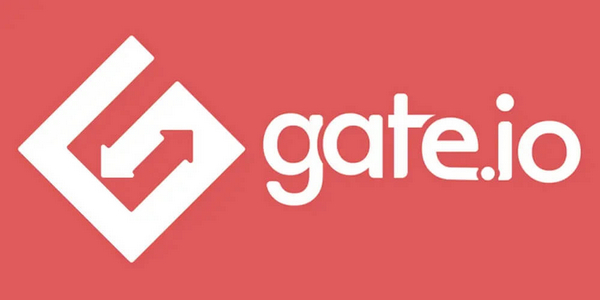-
 Bitcoin
Bitcoin $84,587.1685
-0.75% -
 Ethereum
Ethereum $1,580.7398
-2.50% -
 Tether USDt
Tether USDt $1.0001
0.03% -
 XRP
XRP $2.0586
-1.33% -
 BNB
BNB $589.0996
-0.26% -
 Solana
Solana $136.4670
-1.76% -
 USDC
USDC $1.0000
0.02% -
 TRON
TRON $0.2458
1.78% -
 Dogecoin
Dogecoin $0.1538
-2.83% -
 Cardano
Cardano $0.6161
-1.71% -
 Chainlink
Chainlink $13.2746
2.65% -
 UNUS SED LEO
UNUS SED LEO $9.3281
0.21% -
 Avalanche
Avalanche $19.4820
-2.78% -
 Toncoin
Toncoin $2.9884
0.95% -
 Stellar
Stellar $0.2423
-1.81% -
 Shiba Inu
Shiba Inu $0.0...01243
1.24% -
 Hedera
Hedera $0.1661
-0.59% -
 Sui
Sui $2.1000
-2.85% -
 Bitcoin Cash
Bitcoin Cash $334.8659
-0.20% -
 Polkadot
Polkadot $3.9047
3.38% -
 Litecoin
Litecoin $76.9503
1.20% -
 Hyperliquid
Hyperliquid $17.3147
-2.36% -
 Dai
Dai $1.0000
0.01% -
 Bitget Token
Bitget Token $4.4009
-3.02% -
 Ethena USDe
Ethena USDe $0.9994
0.02% -
 Pi
Pi $0.6317
-2.76% -
 Monero
Monero $215.3559
1.26% -
 Uniswap
Uniswap $5.2462
-1.34% -
 Pepe
Pepe $0.0...07571
2.55% -
 Aptos
Aptos $5.0648
3.23%
How to make a profit from Gate.io contracts
Traders using contract trading to speculate on price movements without owning the underlying asset must first understand the types of contracts, develop a trading strategy, and choose a reputable exchange like Gate.io.
Nov 07, 2024 at 12:46 am

How to Make a Profit from Gate.io Contracts
Step 1: Understand Contract Trading
- Contract trading involves speculating on the price movements of an underlying asset without owning the asset itself.
- Traders use leverage to amplify their profits, but this also increases their risk of losses.
- It's crucial to familiarize yourself with the different types of contracts (e.g., futures, perpetuals), their underlying assets, and the risks involved.
Step 2: Choose a Trading Strategy
- Develop a trading strategy that aligns with your risk tolerance and financial goals.
- Common strategies include trend following, range trading, breakout trading, and scalping.
- Determine the market conditions, technical indicators, and risk management strategies that guide your trading decisions.
Step 3: Open an Account on Gate.io
- Register for an account on Gate.io, a reputable cryptocurrency exchange known for its wide range of trading options.
- Complete the KYC verification process to activate your account.
- Fund your account with sufficient funds to cover potential losses and leverage.
Step 4: Select a Contract and Leverage
- Choose the contract you want to trade based on its underlying asset, price volatility, and liquidity.
- Decide on the appropriate leverage ratio, considering the volatility of the market and your risk tolerance.
- Remember that higher leverage increases profits but also magnifies losses.
Step 5: Place an Order
- Utilize Gate.io's trading platform to place your order.
- Specify the order type (e.g., market order, limit order, stop-loss order), the direction (buy/sell), and the quantity of contracts.
- Set a stop-loss order to limit potential losses if the market moves against you.
Step 6: Monitor and Manage Risk
- Actively monitor your open positions and the market conditions.
- Adjust your strategy or exit the trade if the market shows signs of reversal or volatility spikes.
- Implement risk management strategies such as position sizing, stop-loss orders, and taking profits to protect your capital.
Step 7: Close Your Position
- When you want to exit your trade, place an opposite order (e.g., a sell order to close a buy position).
- Set a take-profit order to lock in your profits and limit potential losses.
- Close your position manually or wait for your stop-loss or take-profit orders to be executed.
Step 8: Evaluate and Improve
- After each trade, take time to evaluate your performance and identify areas for improvement.
- Track your results, analyze your trading patterns, and adjust your strategy accordingly.
- Continuous learning and adaptation are crucial for long-term profitability in contract trading.
Additional Tips for Profitability
- Research and Due Diligence: Study the underlying asset, the market conditions, and the risks involved before trading.
- Use Multiple Risk Management Tools: Implement a combination of risk management techniques, including stop-loss orders, position sizing, and profit-taking strategies.
- Control Your Emotions: Avoid trading based on emotions or FOMO (fear of missing out). Stick to your trading plan and manage your trades rationally.
- Don't Overtrade: Trade only with funds you can afford to lose and avoid excessive leveraging.
- Seek Professional Advice: Consider consulting with experienced traders or financial advisors for personalized guidance and support.
Disclaimer:info@kdj.com
The information provided is not trading advice. kdj.com does not assume any responsibility for any investments made based on the information provided in this article. Cryptocurrencies are highly volatile and it is highly recommended that you invest with caution after thorough research!
If you believe that the content used on this website infringes your copyright, please contact us immediately (info@kdj.com) and we will delete it promptly.
- When Hesitation Costs Money, Traders Turn to Precision. Ripple (XRP) and Toncoin (TON) Are Both Capturing Attention This April
- 2025-04-21 02:25:13
- Comparing transaction costs on the two most used blockchains, Bitcoin and Ethereum, in the past couple of years demonstrates a significant drop.
- 2025-04-21 02:25:13
- Upcoming Token Unlocks Will Flood the Market with New Sells
- 2025-04-21 02:20:13
- UDS, VENOM, ALT and other tokens will be unlocked in large amounts next week
- 2025-04-21 02:20:13
- Bitcoin May Have Just Pulled Off a Technically Significant Move — But Not Everyone Is Impressed
- 2025-04-21 02:15:12
- What Happens If You Put $2,000 Into PEPE Meme Coin Today? Here's What the Charts Say
- 2025-04-21 02:15:12
Related knowledge

Is it a risk that SHIB's derivatives position is 3 times that of the spot?
Apr 20,2025 at 12:35am
Is it a risk that SHIB's derivatives position is 3 times that of the spot? The cryptocurrency market is known for its volatility and high-risk nature, and Shiba Inu (SHIB) is no exception. One of the metrics that traders and investors closely monitor is the ratio of derivatives to spot positions. SHIB's derivatives position being three times that of the...

What does SHIB's Cardano coefficient below 0.3 indicate?
Apr 19,2025 at 08:00am
What does SHIB's Cardano coefficient below 0.3 indicate? The Cardano coefficient, often used within the cryptocurrency community, is a metric that helps investors and analysts understand the correlation between different cryptocurrencies. When it comes to SHIB (Shiba Inu) and its Cardano coefficient falling below 0.3, this indicates a relatively low cor...

Is SHIB's TVL suddenly increasing by 20% a positive signal?
Apr 20,2025 at 08:07am
The sudden increase of SHIB's TVL (Total Value Locked) by 20% has sparked a lot of interest and speculation within the cryptocurrency community. TVL is an important metric that represents the total amount of assets locked in a DeFi protocol, indicating the level of user engagement and trust in the platform. In this article, we will explore whether this ...

Should SHIB's MVRV ratio break through 5 and stop profit in batches?
Apr 20,2025 at 11:35pm
The MVRV (Market Value to Realized Value) ratio is a key metric used in the cryptocurrency market to assess whether a particular asset is overvalued or undervalued. For Shiba Inu (SHIB), a popular meme coin, understanding the implications of its MVRV ratio breaking through the 5 threshold is crucial for investors looking to manage their portfolios effec...

What does SHIB's Coinbase premium continue to be negative mean?
Apr 21,2025 at 01:35am
The phenomenon of SHIB's Coinbase premium continuing to be negative is an intriguing aspect of the cryptocurrency market, particularly for those invested in or interested in Shiba Inu (SHIB). To understand this, it's essential to break down what the Coinbase premium is and what a negative value signifies in the context of SHIB. Understanding Coinbase Pr...

Is the sudden decrease in liquidity of SHIB stablecoin pool dangerous?
Apr 20,2025 at 02:15pm
The sudden decrease in liquidity of the SHIB stablecoin pool has raised concerns among investors and market participants. Liquidity refers to the ability to buy or sell an asset without causing a significant price change, and a decrease in liquidity can have serious implications for the stability and functionality of a cryptocurrency ecosystem. In this ...

Is it a risk that SHIB's derivatives position is 3 times that of the spot?
Apr 20,2025 at 12:35am
Is it a risk that SHIB's derivatives position is 3 times that of the spot? The cryptocurrency market is known for its volatility and high-risk nature, and Shiba Inu (SHIB) is no exception. One of the metrics that traders and investors closely monitor is the ratio of derivatives to spot positions. SHIB's derivatives position being three times that of the...

What does SHIB's Cardano coefficient below 0.3 indicate?
Apr 19,2025 at 08:00am
What does SHIB's Cardano coefficient below 0.3 indicate? The Cardano coefficient, often used within the cryptocurrency community, is a metric that helps investors and analysts understand the correlation between different cryptocurrencies. When it comes to SHIB (Shiba Inu) and its Cardano coefficient falling below 0.3, this indicates a relatively low cor...

Is SHIB's TVL suddenly increasing by 20% a positive signal?
Apr 20,2025 at 08:07am
The sudden increase of SHIB's TVL (Total Value Locked) by 20% has sparked a lot of interest and speculation within the cryptocurrency community. TVL is an important metric that represents the total amount of assets locked in a DeFi protocol, indicating the level of user engagement and trust in the platform. In this article, we will explore whether this ...

Should SHIB's MVRV ratio break through 5 and stop profit in batches?
Apr 20,2025 at 11:35pm
The MVRV (Market Value to Realized Value) ratio is a key metric used in the cryptocurrency market to assess whether a particular asset is overvalued or undervalued. For Shiba Inu (SHIB), a popular meme coin, understanding the implications of its MVRV ratio breaking through the 5 threshold is crucial for investors looking to manage their portfolios effec...

What does SHIB's Coinbase premium continue to be negative mean?
Apr 21,2025 at 01:35am
The phenomenon of SHIB's Coinbase premium continuing to be negative is an intriguing aspect of the cryptocurrency market, particularly for those invested in or interested in Shiba Inu (SHIB). To understand this, it's essential to break down what the Coinbase premium is and what a negative value signifies in the context of SHIB. Understanding Coinbase Pr...

Is the sudden decrease in liquidity of SHIB stablecoin pool dangerous?
Apr 20,2025 at 02:15pm
The sudden decrease in liquidity of the SHIB stablecoin pool has raised concerns among investors and market participants. Liquidity refers to the ability to buy or sell an asset without causing a significant price change, and a decrease in liquidity can have serious implications for the stability and functionality of a cryptocurrency ecosystem. In this ...
See all articles





















































































